Abstract
Salmonella johannesburg has been prevalent in Hong Kong since 1973 and most strains were resistant to a multiplicity of antibiotics. The susceptibility of S. johannesburg strains isolated in a 5-year period from 1973 to 1977 to eight antimicrobial drugs including ampicillin (A), streptomycin (S), tetracycline (T), chloramphenicol (C), Kanamycin (K), sulphadiazine (Su), trimethoprim (Tm) and gentamicin (G) was tested by the agar dilution method. The proportion of strains resistant to chloramphenicol and ampicillin increased steadily during the 5-year period while those resistant to tetracycline decreased dramatically. This change was associated with an alteration of predominant patterns of antibiotic resistance: strains with the resistance pattern A.S.T.C.K.Su predominated in years 1973, 1974 and 1975 while those with the resistance pattern A.S.C.K.Su predominated in years 1976 and 1977. Analysis of the resistance patterns of S. johannesburg strains isolated from the same cases showed that the resistance pattern A.S.C.K.Su was more stable, and changed less frequently to other patterns of resistance than strains with the resistance pattern A.S.T.C.K.Su. In donor salmonella strains with the A.S.T.C.K.Su resistance pattern, transmissible factors carrying resistance to A.S.T.C.K.Su in toto, to A.S.T.C.Su,A.T.C.K.Su and to A or T alone were demonstrated. In donor salmonella strains with the A.S.C.K.Su resistance pattern, transmissible factors carrying resistance to A.S.C.K.Su in toto and to A.S.K.Su were detected. The significance of the carriage of such transmissible resistance factors by this Salmonella is briefly discussed.
Full text
PDF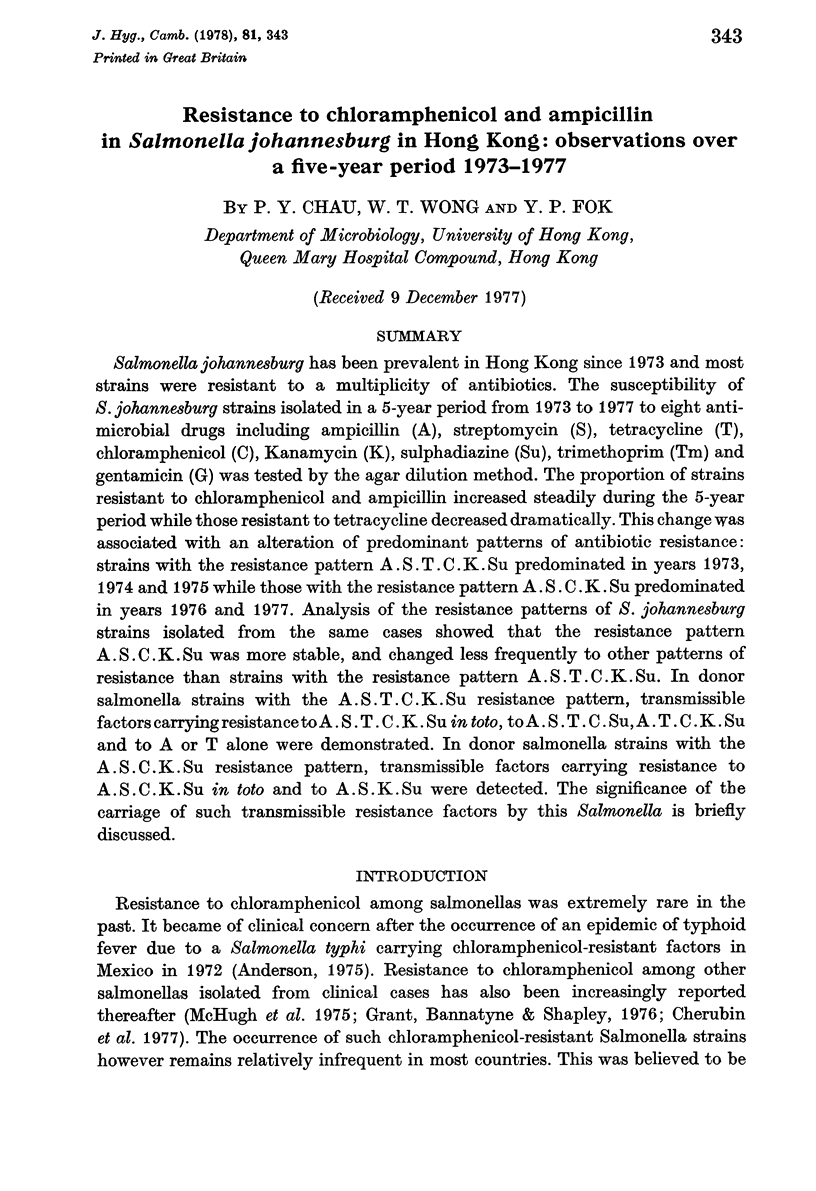
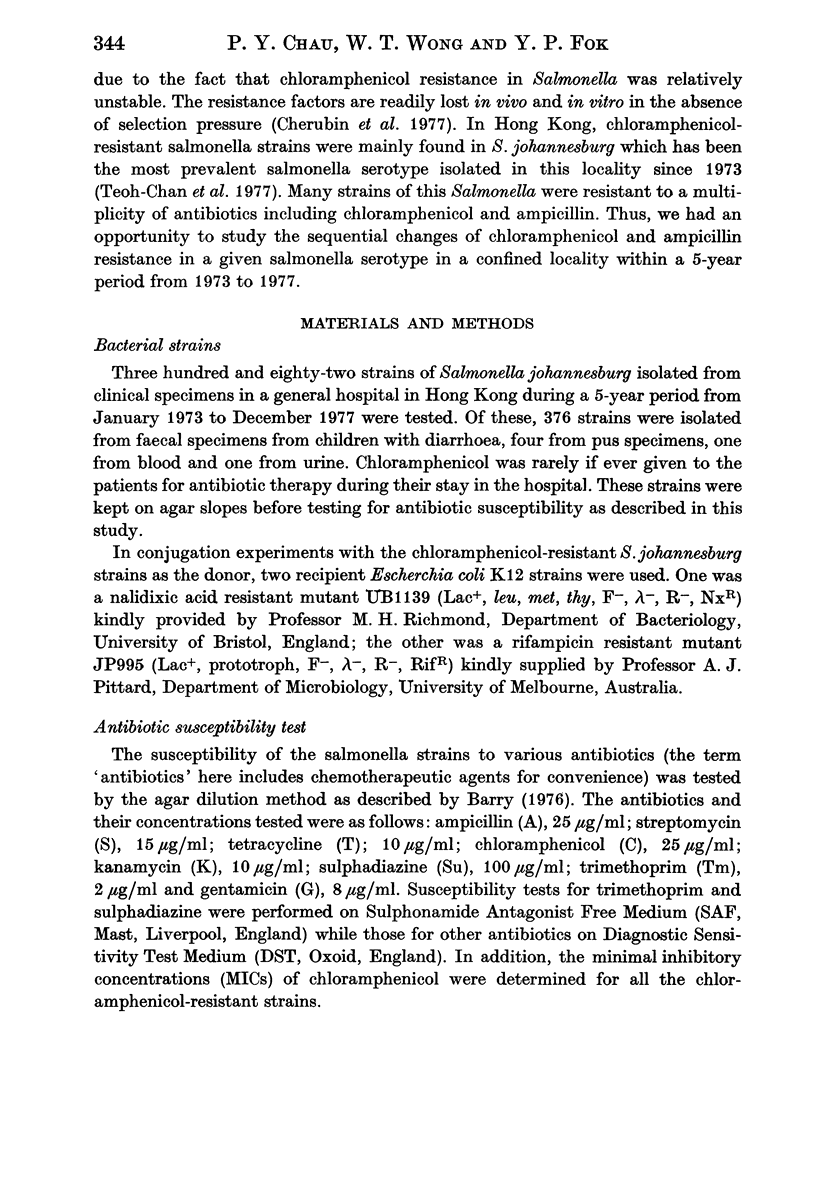
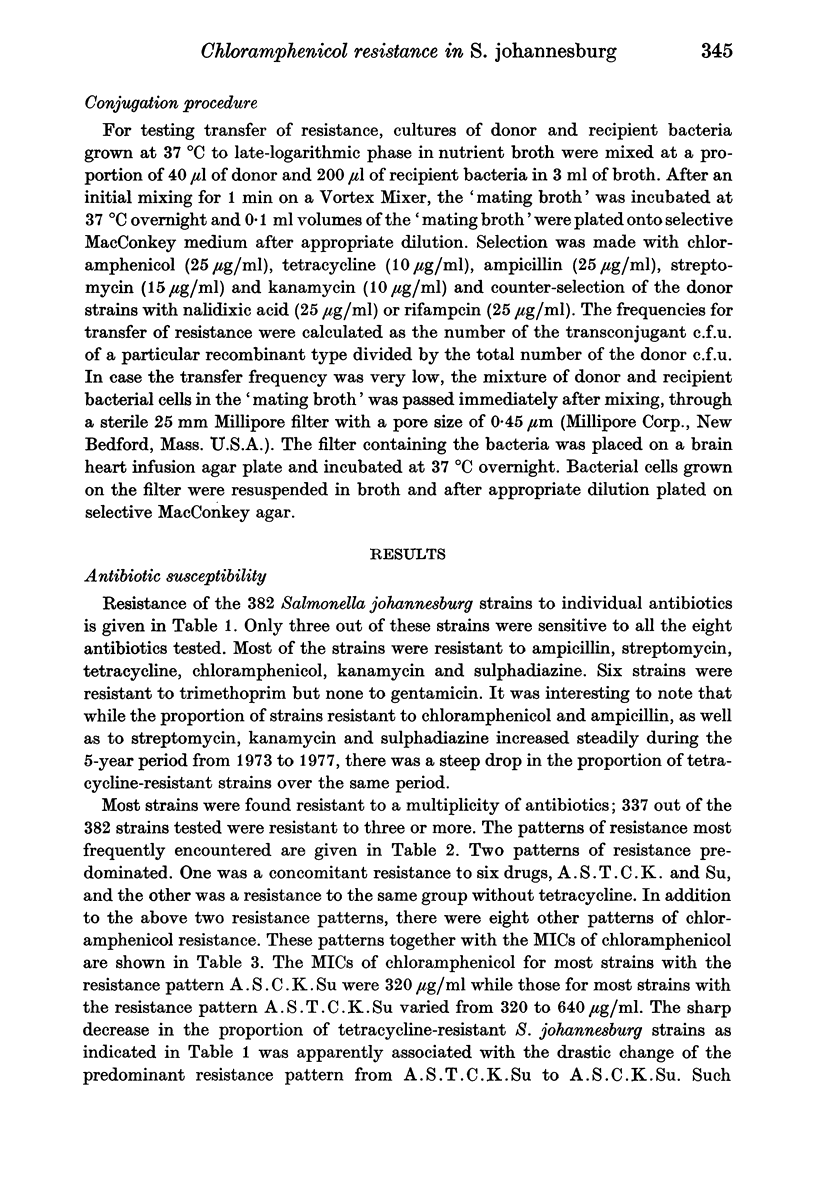
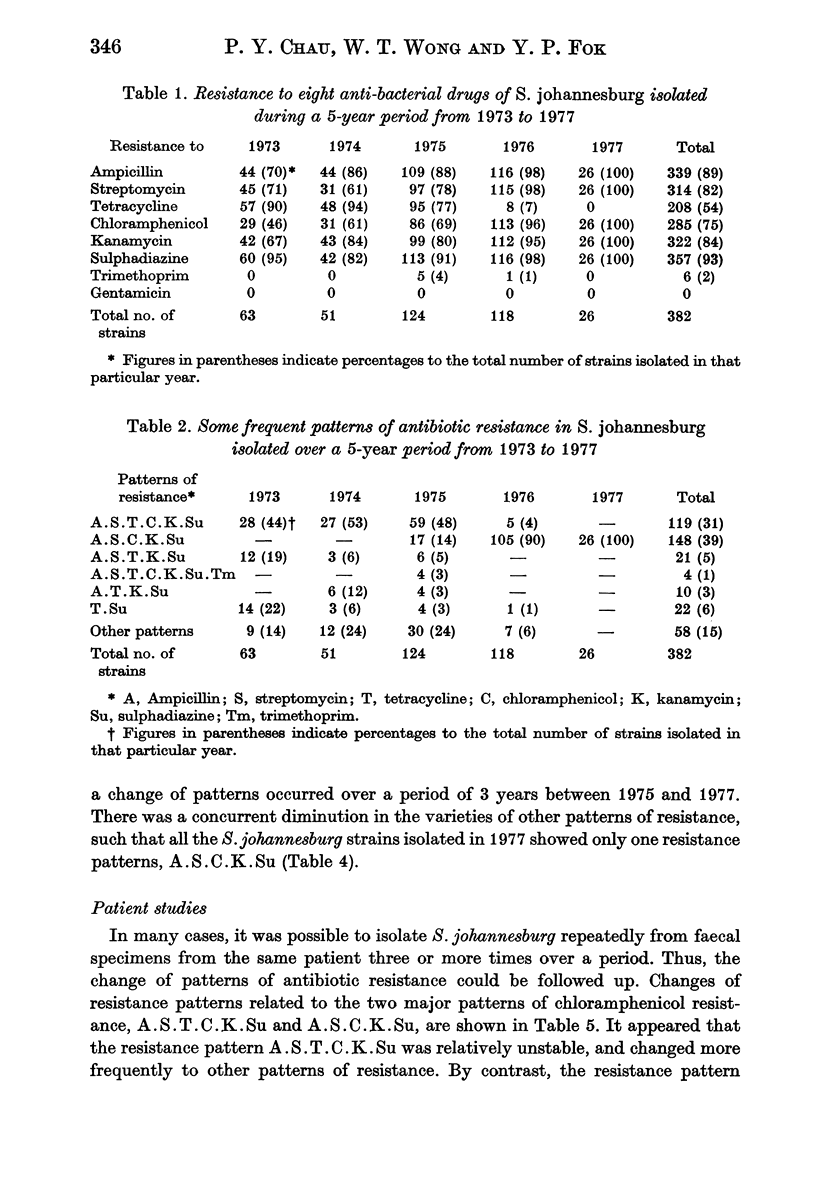
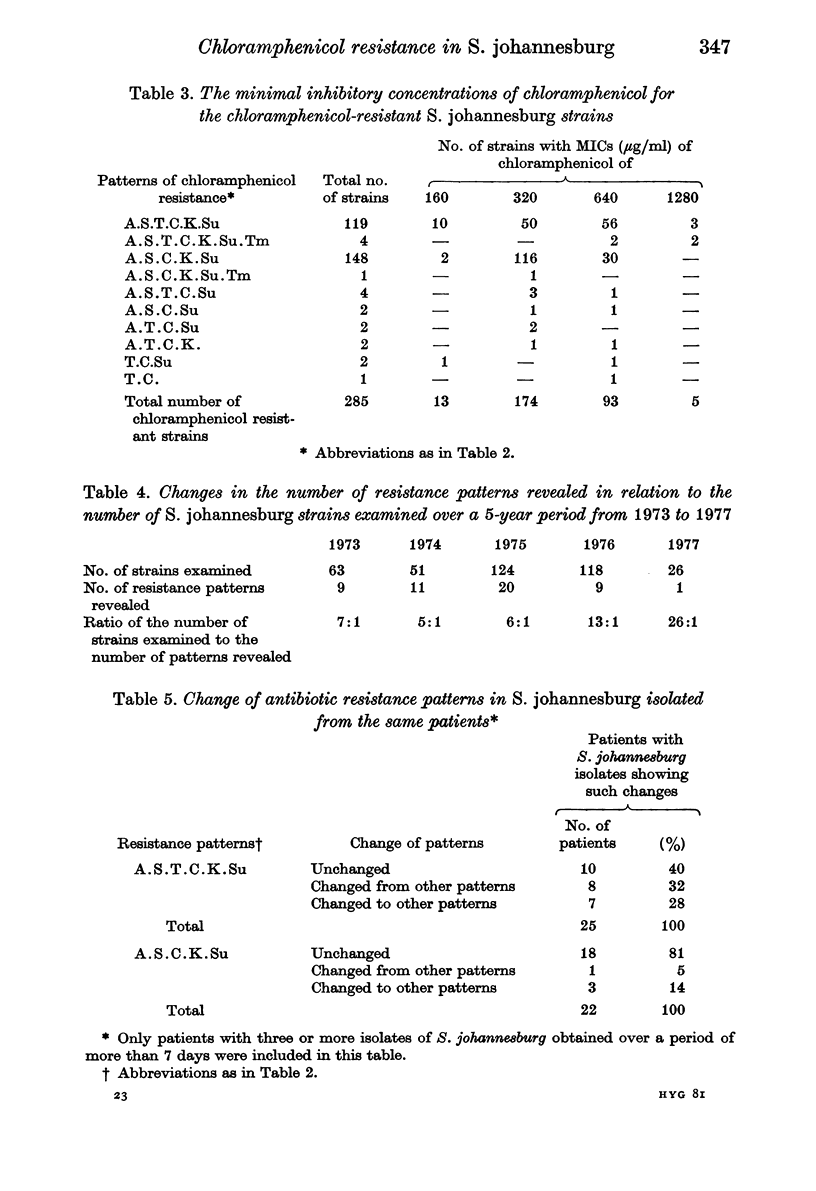
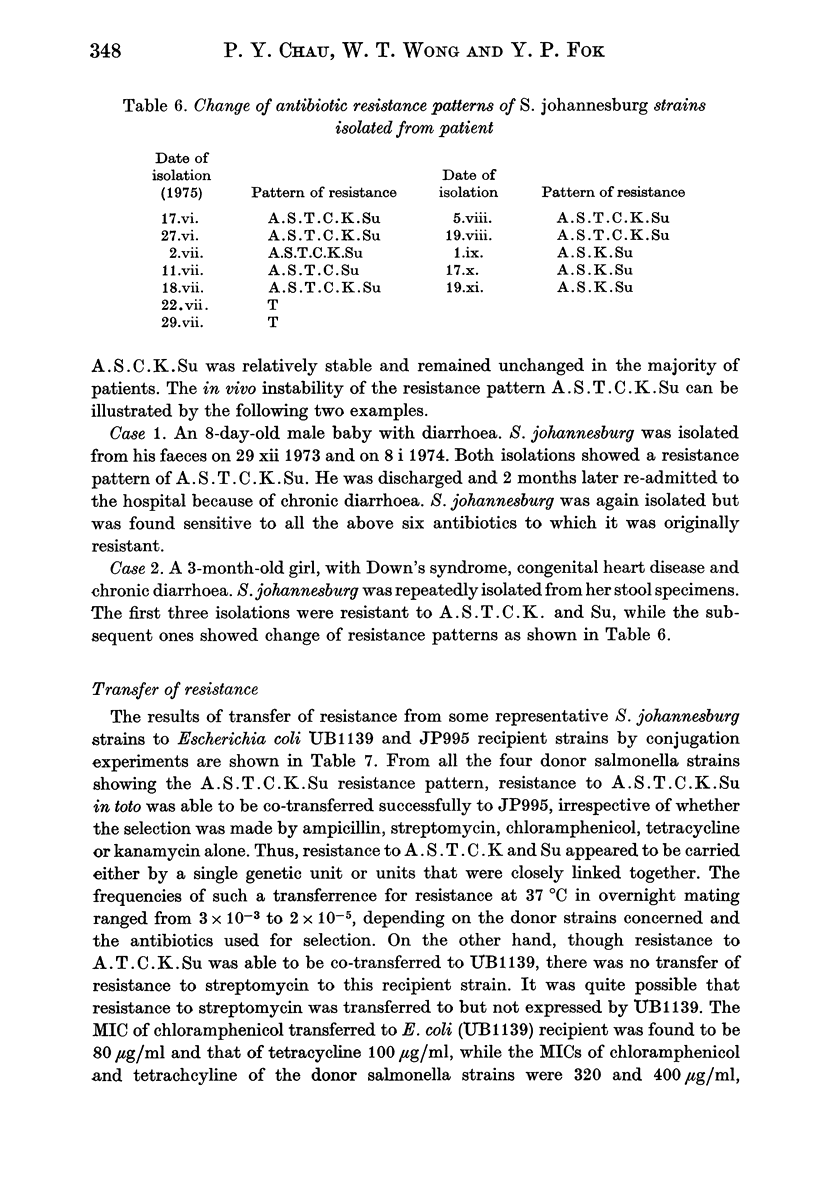
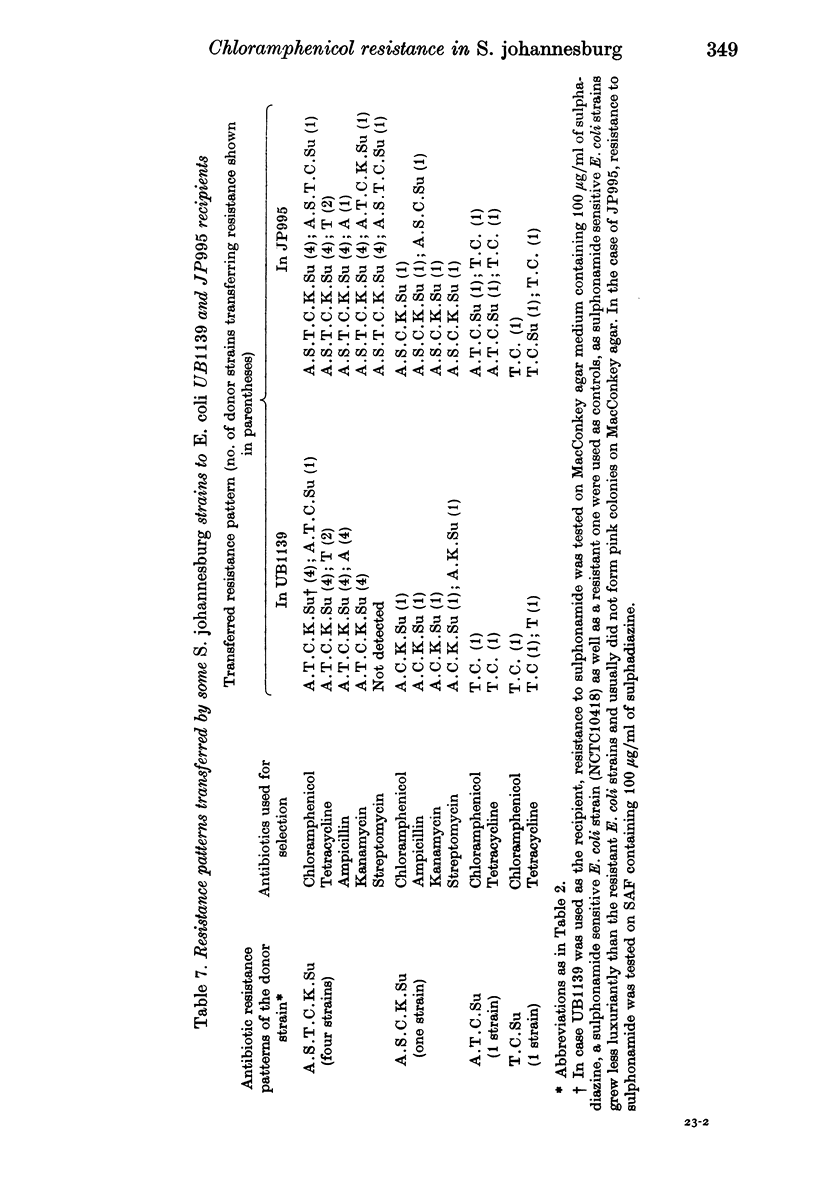
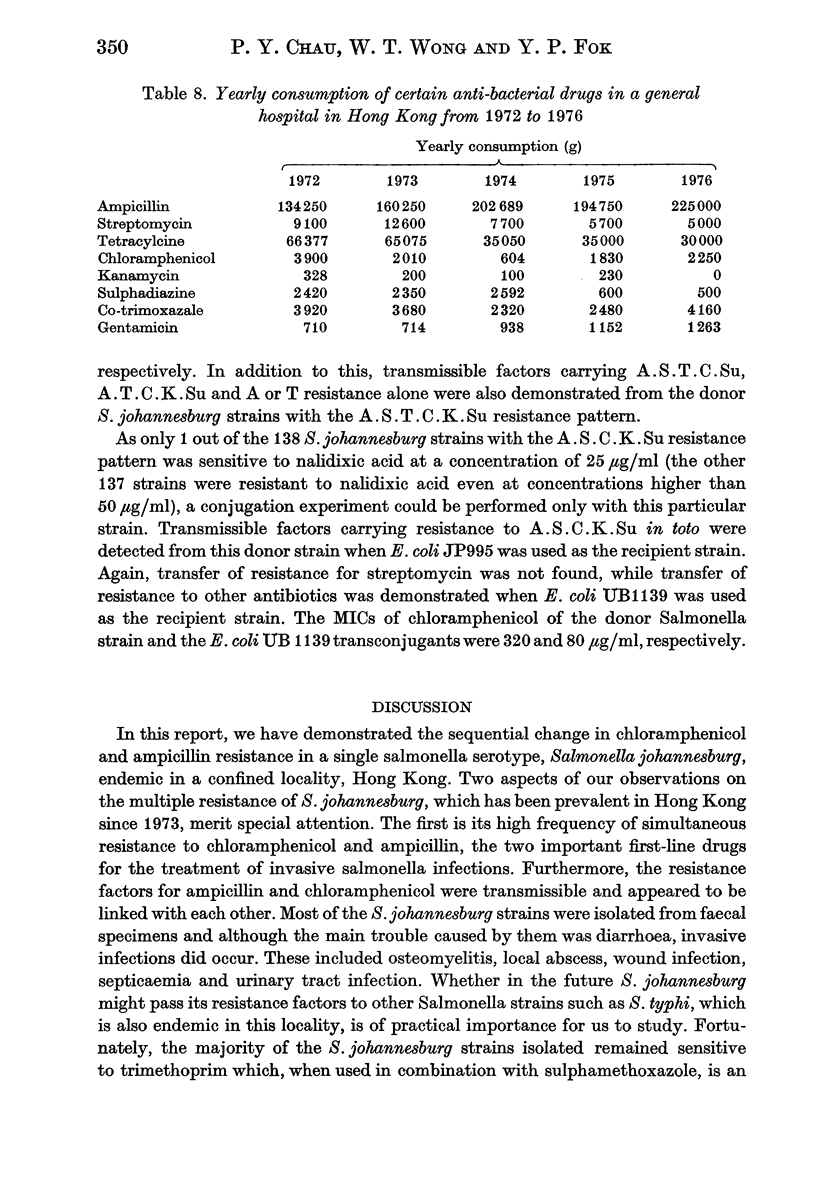
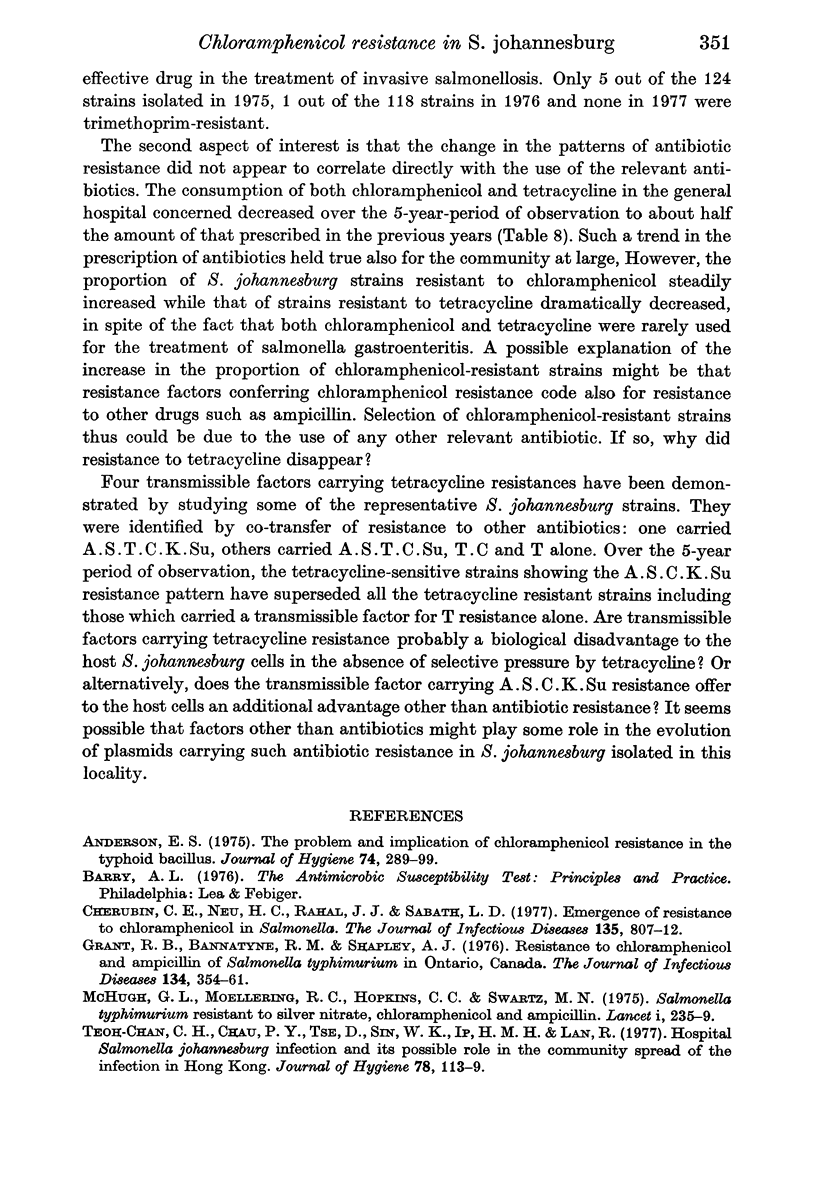
Selected References
These references are in PubMed. This may not be the complete list of references from this article.
- Anderson E. S. The problem and implications of chloramphenicol resistance in the typhoid bacillus. J Hyg (Lond) 1975 Apr;74(2):289–299. doi: 10.1017/s0022172400024360. [DOI] [PMC free article] [PubMed] [Google Scholar]
- Grant R. B., Bannatyne R. M., Shapiey A. J. Resistance to chloramphenicol and ampicillin of Salmonella typhimurium in Ontario, Canada. J Infect Dis. 1976 Oct;134(4):354–361. doi: 10.1093/infdis/134.4.354. [DOI] [PubMed] [Google Scholar]
- McHugh G. L., Moellering R. C., Hopkins C. C., Swartz M. N. Salmonella typhimurium resistant to silver nitrate, chloramphenicol, and ampicillin. Lancet. 1975 Feb 1;1(7901):235–240. doi: 10.1016/s0140-6736(75)91138-1. [DOI] [PubMed] [Google Scholar]
- Teoh-Chan C. H., Chau P. Y., Tse D., Sin W. K., Ip H. M., Lan R. Hospital Salmonella johannesburg infection and its possible role in the community spread of the infection in Hong Kong. J Hyg (Lond) 1977 Feb;78(1):113–119. doi: 10.1017/s0022172400055996. [DOI] [PMC free article] [PubMed] [Google Scholar]


